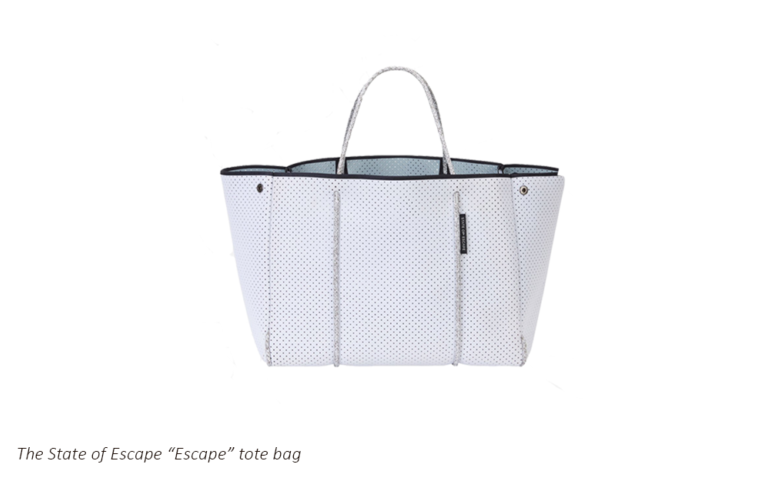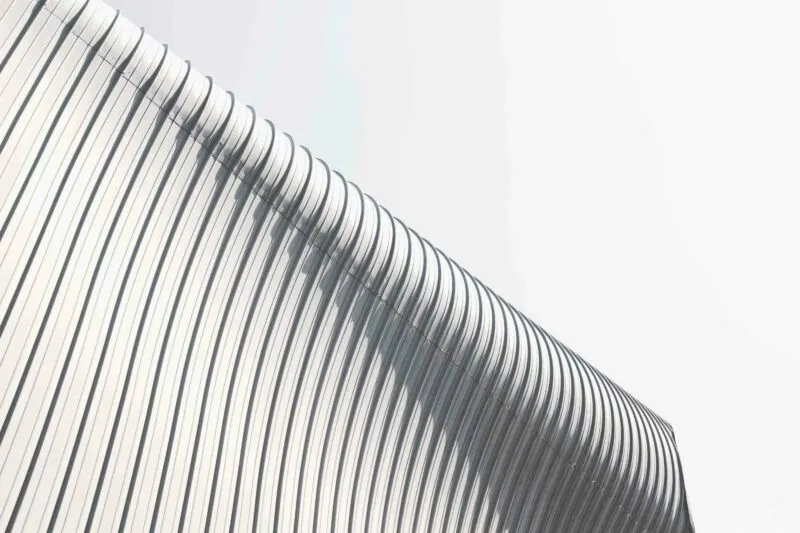Sweet escape for would-be copyright infringers: Copyright found not to subsist in State of Escape tote bag
State of Escape is an Australian company that primarily designs and produces handbags and tote bags. State of Escape accused another Australian bag and accessory company of copyright infringement of one of State of Escape’s products - a perforated neoprene tote bag called the “Escape Bag”. Beata Khaidurova examines the court's decision which should be taken as a warning to designers of bags, accessories and other fashion items about the danger of relying on copyright protection alone.
When State of Escape created its perforated neoprene tote bag, it is likely to have regarded the bag to be highly creative and distinctive. Consequently, when it detected a copy of its tote bag being marketed by Chuchka, State of Escape considered this to be a violation of its intellectual property rights, and alleged infringement of copyright in its tote bag design.
Ultimately this allegation was tested in the Federal Court and in State of Escape Accessories Pty Ltd v Schwartz [2020] FCA 1606, the Court rejected the allegation and found that copyright did not subsist in the bag because it was not a work of artistic craftsmanship.
State of Escape’s accusation of copyright infringement of Escape Bag
State of Escape is an Australian company that primarily designs and produces handbags and tote bags. State of Escape accused another Australian bag and accessory company, Chuchka, of copyright infringement of one of State of Escape’s products - a perforated neoprene tote bag called the “Escape Bag”.

The interplay between copyright protection and registered designs when it comes to fashion articles
Copyright law provides protection for many types of works, including musical, literary and artistic works. In this case, State of Escape alleged that their Escape Bag was an artistic work in which copyright subsisted, and that therefore the production of a visually similar product by Chuchka amounted to copyright infringement. However, the law relating to how copyright protection is applied to mass produced items is a somewhat complex one, as the laws were designed to encourage such items to be protected by way of registered designs. In this case, State of Escape did not have a registered design for their Escape Bag.
The Court looked to s77 of the Copyright Act 1968, which applies to cases where an artistic work has been industrially applied but where no corresponding design has been registered under the Designs Act 2003. While it is not an infringement to reproduce works that fall under s77, this section does not apply to artistic works that are considered to be works of artistic craftsmanship. State of Escape therefore needed to prove that their Escape Bag was a work of artistic craftsmanship for copyright protection to be afforded to the bag.
Was the Escape Bag a work of artistic craftsmanship?
Evidence was provided by State of Escape regarding the design process that had been undertaken, the aesthetic qualities of the bag, and the distinctive features of the bag. However, at paragraph [109] of the decision, the Court emphasised that determining whether the bag was a work of artistic craftsmanship turned primarily on the extent to which the bag’s artistic expression was unconstrained by functional considerations.
Having considered the evidence presented, it was the Court’s ultimate opinion that the design approach was constrained by functional considerations. The overall design of the bag was a conventional shape, and many design decisions were driven by the use of the neoprene fabric, which needed certain structural features to give it support given its soft nature. While certain choices were largely aesthetic, such as the choice of the fabric, it was found that these choices were not acts of artistic craftsmanship, particularly as the materials that were chosen were readily available commercially.
Finding the bag was not a work of artistic craftsmanship, the Court found that s77 did apply and the bag produced by Chuchka was therefore found not to infringe.
Should copyright protection be relied upon by the fashion industry?
This decision should be taken as a warning to designers of bags, accessories and other fashion items about the danger of relying on copyright protection alone. As highlighted in the decision, copyright law was specifically written to encourage the use of registered designs to protect the appearance of functional items, by declining to protect works that have been industrially applied. While copyright protection can still be both effective and appropriate in some cases, registered design protection continues to be the most effective way to protect mass produced fashion articles.
Intellectual property protection for the clothing and fashion industry was discussed in further detail in our recent article Catwalks And Copycats – Intellectual Property Protection For The Fashion Industry.
Key takeaways from State of Escape v Schwarz decision
- Relying on copyright protection alone can be ineffective when it comes to mass produced fashion articles.
- Registered design protection continues to be the preferred way to protect designs that have been industrially applied.
- Due to the complexity of the overlap between copyright and designs law, designers are encouraged to speak to an IP professional regarding the best course of action to effectively protect their particular products.


